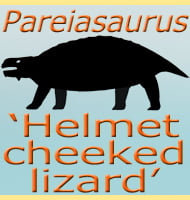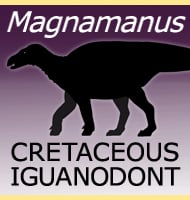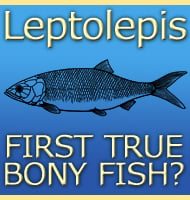In Depth
Zupaysaurus is often reconstructed with a pair of crests rising from the top of its skull like the more famous Dilophosaurus. Indeed, Zupaysaurus also has a similar upper jaw arrangement to Dilophosaurus with a notable gap between the teeth of the maxilla and premaxilla forming a small notch. However if a 2005 presentation by M. D. Ezcurra & F. E. Novas is correct, then these ‘crests’ were actually formed when skull was crushed during fossilisation, the resulting pressures pushing the lacrimal bones of the skull upwards, making look like they were crests in life.
Zupaysaurus was once considered to be one of the first tetaneuran theropods (stiff tailed theropods that would become the dominant forms during the Jurassic and Cretaceous periods), though today it is considered by most to be a basal coelophysoid theropod, something that again confirms a connection with Dilophosaurus on the grounds of family relationship. In addition the 2006 description of Dracovenator placed Zupaysaurus in a group with Dracovenator and Dilophosaurus as a dilophosaurid, though not all palaeontologists are convinced about this assessment, preferring to treat Zupaysaurus as related but separate. Zupaysaurus is also considered to be even more primitive than other coelophysoids such as Coelophysis, Liliensternus and Megapnosaurus.
Zupaysaurus has been found in the Los Colorados Formation of Argentina, and other dinosaurs from this formation include Coloradisaurus, Lessemsaurus and Riojasaurus. Only Coloradisaurus is confirmed to match Zupaysaurus for a Rhaetian era deposit, revealing at possible predator prey interaction for these two genera. Lessemsaurus and Riojasaurus were earlier in the Norian period, but if they managed to overlap into the Rhaetian, or Zupaysaurus first appeared earlier in the Norian (neither proven by current fossils) then Zupaysaurus, or an ancestor of may have preyed upon juveniles of these genera.
Further Reading
– A new Triassic carnivorous dinosaur from Argentina, A. B. Arcucci & A. C Rodolfo - 2003. – Phylogenetic relationships of the Triassic theropod *Zupaysaurus rougieri* from NW Argentina. Presented in August 2005 during the II Latin American Congress of Vertebrate Paleontology, M. D. Ezcurra & F. E. Novas - 2005. - A new theropod dinosaur from the Early Jurassic of South Africa and its implications for the early evolution of theropods, A. M. Yates - 2006.










